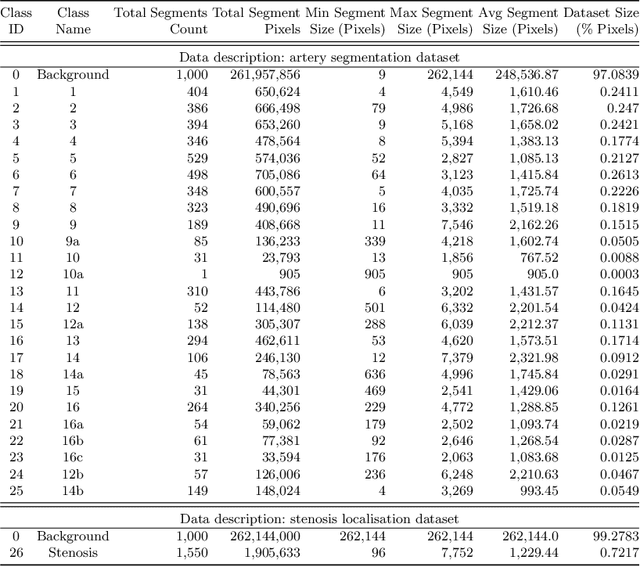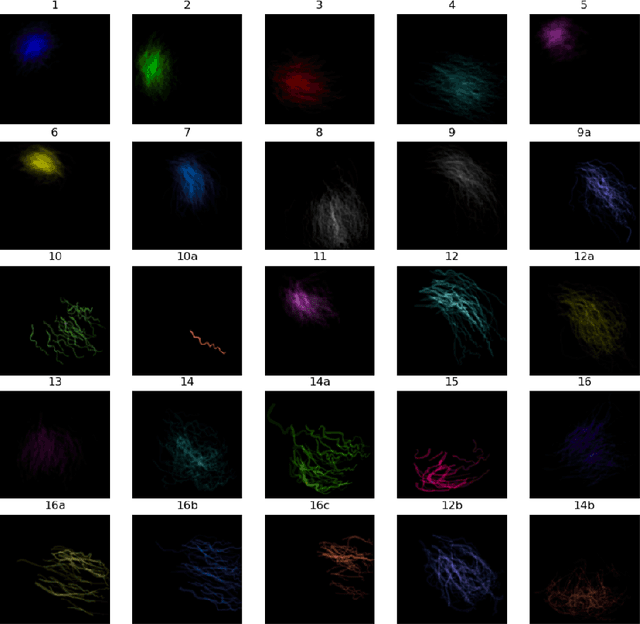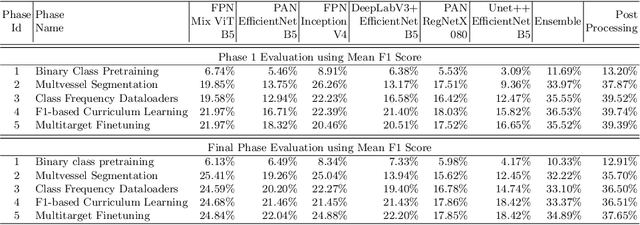Junaid Qadir
A Survey of Social Cybersecurity: Techniques for Attack Detection, Evaluations, Challenges, and Future Prospects
Apr 06, 2025Abstract:In today's digital era, the Internet, especially social media platforms, plays a significant role in shaping public opinions, attitudes, and beliefs. Unfortunately, the credibility of scientific information sources is often undermined by the spread of misinformation through various means, including technology-driven tools like bots, cyborgs, trolls, sock-puppets, and deep fakes. This manipulation of public discourse serves antagonistic business agendas and compromises civil society. In response to this challenge, a new scientific discipline has emerged: social cybersecurity.
TEMSET-24K: Densely Annotated Dataset for Indexing Multipart Endoscopic Videos using Surgical Timeline Segmentation
Feb 10, 2025Abstract:Indexing endoscopic surgical videos is vital in surgical data science, forming the basis for systematic retrospective analysis and clinical performance evaluation. Despite its significance, current video analytics rely on manual indexing, a time-consuming process. Advances in computer vision, particularly deep learning, offer automation potential, yet progress is limited by the lack of publicly available, densely annotated surgical datasets. To address this, we present TEMSET-24K, an open-source dataset comprising 24,306 trans-anal endoscopic microsurgery (TEMS) video micro-clips. Each clip is meticulously annotated by clinical experts using a novel hierarchical labeling taxonomy encompassing phase, task, and action triplets, capturing intricate surgical workflows. To validate this dataset, we benchmarked deep learning models, including transformer-based architectures. Our in silico evaluation demonstrates high accuracy (up to 0.99) and F1 scores (up to 0.99) for key phases like Setup and Suturing. The STALNet model, tested with ConvNeXt, ViT, and SWIN V2 encoders, consistently segmented well-represented phases. TEMSET-24K provides a critical benchmark, propelling state-of-the-art solutions in surgical data science.
Safeguarding connected autonomous vehicle communication: Protocols, intra- and inter-vehicular attacks and defenses
Feb 06, 2025



Abstract:The advancements in autonomous driving technology, coupled with the growing interest from automotive manufacturers and tech companies, suggest a rising adoption of Connected Autonomous Vehicles (CAVs) in the near future. Despite some evidence of higher accident rates in AVs, these incidents tend to result in less severe injuries compared to traditional vehicles due to cooperative safety measures. However, the increased complexity of CAV systems exposes them to significant security vulnerabilities, potentially compromising their performance and communication integrity. This paper contributes by presenting a detailed analysis of existing security frameworks and protocols, focusing on intra- and inter-vehicle communications. We systematically evaluate the effectiveness of these frameworks in addressing known vulnerabilities and propose a set of best practices for enhancing CAV communication security. The paper also provides a comprehensive taxonomy of attack vectors in CAV ecosystems and suggests future research directions for designing more robust security mechanisms. Our key contributions include the development of a new classification system for CAV security threats, the proposal of practical security protocols, and the introduction of use cases that demonstrate how these protocols can be integrated into real-world CAV applications. These insights are crucial for advancing secure CAV adoption and ensuring the safe integration of autonomous vehicles into intelligent transportation systems.
Open Foundation Models in Healthcare: Challenges, Paradoxes, and Opportunities with GenAI Driven Personalized Prescription
Feb 04, 2025Abstract:In response to the success of proprietary Large Language Models (LLMs) such as OpenAI's GPT-4, there is a growing interest in developing open, non-proprietary LLMs and AI foundation models (AIFMs) for transparent use in academic, scientific, and non-commercial applications. Despite their inability to match the refined functionalities of their proprietary counterparts, open models hold immense potential to revolutionize healthcare applications. In this paper, we examine the prospects of open-source LLMs and AIFMs for developing healthcare applications and make two key contributions. Firstly, we present a comprehensive survey of the current state-of-the-art open-source healthcare LLMs and AIFMs and introduce a taxonomy of these open AIFMs, categorizing their utility across various healthcare tasks. Secondly, to evaluate the general-purpose applications of open LLMs in healthcare, we present a case study on personalized prescriptions. This task is particularly significant due to its critical role in delivering tailored, patient-specific medications that can greatly improve treatment outcomes. In addition, we compare the performance of open-source models with proprietary models in settings with and without Retrieval-Augmented Generation (RAG). Our findings suggest that, although less refined, open LLMs can achieve performance comparable to proprietary models when paired with grounding techniques such as RAG. Furthermore, to highlight the clinical significance of LLMs-empowered personalized prescriptions, we perform subjective assessment through an expert clinician. We also elaborate on ethical considerations and potential risks associated with the misuse of powerful LLMs and AIFMs, highlighting the need for a cautious and responsible implementation in healthcare.
Harnessing Multi-Agent LLMs for Complex Engineering Problem-Solving: A Framework for Senior Design Projects
Jan 02, 2025Abstract:Multi-Agent Large Language Models (LLMs) are gaining significant attention for their ability to harness collective intelligence in complex problem-solving, decision-making, and planning tasks. This aligns with the concept of the wisdom of crowds, where diverse agents contribute collectively to generating effective solutions, making it particularly suitable for educational settings. Senior design projects, also known as capstone or final year projects, are pivotal in engineering education as they integrate theoretical knowledge with practical application, fostering critical thinking, teamwork, and real-world problem-solving skills. In this paper, we explore the use of Multi-Agent LLMs in supporting these senior design projects undertaken by engineering students, which often involve multidisciplinary considerations and conflicting objectives, such as optimizing technical performance while addressing ethical, social, and environmental concerns. We propose a framework where distinct LLM agents represent different expert perspectives, such as problem formulation agents, system complexity agents, societal and ethical agents, or project managers, thus facilitating a holistic problem-solving approach. This implementation leverages standard multi-agent system (MAS) concepts such as coordination, cooperation, and negotiation, incorporating prompt engineering to develop diverse personas for each agent. These agents engage in rich, collaborative dialogues to simulate human engineering teams, guided by principles from swarm AI to efficiently balance individual contributions towards a unified solution. We adapt these techniques to create a collaboration structure for LLM agents, encouraging interdisciplinary reasoning and negotiation similar to real-world senior design projects. To assess the efficacy of this framework, we collected six proposals of engineering and computer science of...
Toward Inclusive Educational AI: Auditing Frontier LLMs through a Multiplexity Lens
Jan 02, 2025Abstract:As large language models (LLMs) like GPT-4 and Llama 3 become integral to educational contexts, concerns are mounting over the cultural biases, power imbalances, and ethical limitations embedded within these technologies. Though generative AI tools aim to enhance learning experiences, they often reflect values rooted in Western, Educated, Industrialized, Rich, and Democratic (WEIRD) cultural paradigms, potentially sidelining diverse global perspectives. This paper proposes a framework to assess and mitigate cultural bias within LLMs through the lens of applied multiplexity. Multiplexity, inspired by Senturk et al. and rooted in Islamic and other wisdom traditions, emphasizes the coexistence of diverse cultural viewpoints, supporting a multi-layered epistemology that integrates both empirical sciences and normative values. Our analysis reveals that LLMs frequently exhibit cultural polarization, with biases appearing in both overt responses and subtle contextual cues. To address inherent biases and incorporate multiplexity in LLMs, we propose two strategies: \textit{Contextually-Implemented Multiplex LLMs}, which embed multiplex principles directly into the system prompt, influencing LLM outputs at a foundational level and independent of individual prompts, and \textit{Multi-Agent System (MAS)-Implemented Multiplex LLMs}, where multiple LLM agents, each representing distinct cultural viewpoints, collaboratively generate a balanced, synthesized response. Our findings demonstrate that as mitigation strategies evolve from contextual prompting to MAS-implementation, cultural inclusivity markedly improves, evidenced by a significant rise in the Perspectives Distribution Score (PDS) and a PDS Entropy increase from 3.25\% at baseline to 98\% with the MAS-Implemented Multiplex LLMs. Sentiment analysis further shows a shift towards positive sentiment across cultures,...
R-CONV: An Analytical Approach for Efficient Data Reconstruction via Convolutional Gradients
Jun 06, 2024Abstract:In the effort to learn from extensive collections of distributed data, federated learning has emerged as a promising approach for preserving privacy by using a gradient-sharing mechanism instead of exchanging raw data. However, recent studies show that private training data can be leaked through many gradient attacks. While previous analytical-based attacks have successfully reconstructed input data from fully connected layers, their effectiveness diminishes when applied to convolutional layers. This paper introduces an advanced data leakage method to efficiently exploit convolutional layers' gradients. We present a surprising finding: even with non-fully invertible activation functions, such as ReLU, we can analytically reconstruct training samples from the gradients. To the best of our knowledge, this is the first analytical approach that successfully reconstructs convolutional layer inputs directly from the gradients, bypassing the need to reconstruct layers' outputs. Prior research has mainly concentrated on the weight constraints of convolution layers, overlooking the significance of gradient constraints. Our findings demonstrate that existing analytical methods used to estimate the risk of gradient attacks lack accuracy. In some layers, attacks can be launched with less than 5% of the reported constraints.
MedISure: Towards Assuring Machine Learning-based Medical Image Classifiers using Mixup Boundary Analysis
Nov 23, 2023Abstract:Machine learning (ML) models are becoming integral in healthcare technologies, presenting a critical need for formal assurance to validate their safety, fairness, robustness, and trustworthiness. These models are inherently prone to errors, potentially posing serious risks to patient health and could even cause irreparable harm. Traditional software assurance techniques rely on fixed code and do not directly apply to ML models since these algorithms are adaptable and learn from curated datasets through a training process. However, adapting established principles, such as boundary testing using synthetic test data can effectively bridge this gap. To this end, we present a novel technique called Mix-Up Boundary Analysis (MUBA) that facilitates evaluating image classifiers in terms of prediction fairness. We evaluated MUBA for two important medical imaging tasks -- brain tumour classification and breast cancer classification -- and achieved promising results. This research aims to showcase the importance of adapting traditional assurance principles for assessing ML models to enhance the safety and reliability of healthcare technologies. To facilitate future research, we plan to publicly release our code for MUBA.
Multivessel Coronary Artery Segmentation and Stenosis Localisation using Ensemble Learning
Oct 27, 2023



Abstract:Coronary angiography analysis is a common clinical task performed by cardiologists to diagnose coronary artery disease (CAD) through an assessment of atherosclerotic plaque's accumulation. This study introduces an end-to-end machine learning solution developed as part of our solution for the MICCAI 2023 Automatic Region-based Coronary Artery Disease diagnostics using x-ray angiography imagEs (ARCADE) challenge, which aims to benchmark solutions for multivessel coronary artery segmentation and potential stenotic lesion localisation from X-ray coronary angiograms. We adopted a robust baseline model training strategy to progressively improve performance, comprising five successive stages of binary class pretraining, multivessel segmentation, fine-tuning using class frequency weighted dataloaders, fine-tuning using F1-based curriculum learning strategy (F1-CLS), and finally multi-target angiogram view classifier-based collective adaptation. Unlike many other medical imaging procedures, this task exhibits a notable degree of interobserver variability. %, making it particularly amenable to automated analysis. Our ensemble model combines the outputs from six baseline models using the weighted ensembling approach, which our analysis shows is found to double the predictive accuracy of the proposed solution. The final prediction was further refined, targeting the correction of misclassified blobs. Our solution achieved a mean F1 score of $37.69\%$ for coronary artery segmentation, and $39.41\%$ for stenosis localisation, positioning our team in the 5th position on both leaderboards. This work demonstrates the potential of automated tools to aid CAD diagnosis, guide interventions, and improve the accuracy of stent injections in clinical settings.
Adversarial Machine Learning for Social Good: Reframing the Adversary as an Ally
Oct 05, 2023Abstract:Deep Neural Networks (DNNs) have been the driving force behind many of the recent advances in machine learning. However, research has shown that DNNs are vulnerable to adversarial examples -- input samples that have been perturbed to force DNN-based models to make errors. As a result, Adversarial Machine Learning (AdvML) has gained a lot of attention, and researchers have investigated these vulnerabilities in various settings and modalities. In addition, DNNs have also been found to incorporate embedded bias and often produce unexplainable predictions, which can result in anti-social AI applications. The emergence of new AI technologies that leverage Large Language Models (LLMs), such as ChatGPT and GPT-4, increases the risk of producing anti-social applications at scale. AdvML for Social Good (AdvML4G) is an emerging field that repurposes the AdvML bug to invent pro-social applications. Regulators, practitioners, and researchers should collaborate to encourage the development of pro-social applications and hinder the development of anti-social ones. In this work, we provide the first comprehensive review of the emerging field of AdvML4G. This paper encompasses a taxonomy that highlights the emergence of AdvML4G, a discussion of the differences and similarities between AdvML4G and AdvML, a taxonomy covering social good-related concepts and aspects, an exploration of the motivations behind the emergence of AdvML4G at the intersection of ML4G and AdvML, and an extensive summary of the works that utilize AdvML4G as an auxiliary tool for innovating pro-social applications. Finally, we elaborate upon various challenges and open research issues that require significant attention from the research community.
 Add to Chrome
Add to Chrome Add to Firefox
Add to Firefox Add to Edge
Add to Edge